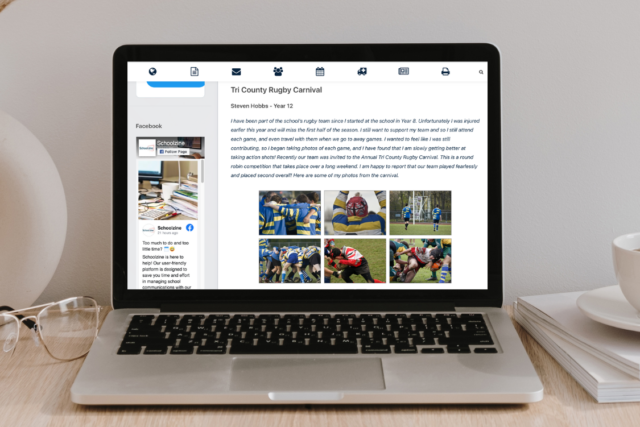In today’s digital age, a school’s online presence is crucial for effective communication with students, parents, and the community. A professional website not only enhances your school’s credibility but also provides essential information to your audience. Fortunately, creating a high-quality school website doesn’t have to break the bank. Here’s a step-by-step guide on how to create a professional school website on a budget in Agra.

Table of Contents
Toggle1. Define Your Goals and Audience
Before diving into the technical aspects, take some time to outline the purpose of your website. Consider the following:
- Target Audience: Who will be visiting your website? (e.g., parents, students, teachers)
- Key Information: What information do you want to provide? (e.g., admission details, school news, curriculum)
- Engagement: How do you want to engage with your audience? (e.g., newsletters, event calendars)
2. Choose the Right Domain Name
Selecting a domain name is a critical step. Aim for a name that reflects your school’s identity and is easy to remember. Here are some tips:
- Keep it Short: A concise domain name is easier to remember and type.
- Use Keywords: Include relevant keywords such as “school” or “academy” to improve search visibility.
- Check Availability: Use domain registration services like GoDaddy or Namecheap to check if your desired domain is available.
3. Select a Budget-Friendly Hosting Service
Choosing the right hosting service is crucial for your website’s performance. Here are some affordable options:
- Shared Hosting: Providers like Bluehost or Hostinger offer reliable shared hosting plans at low prices, perfect for small to medium-sized school websites.
- WordPress Hosting: If you plan to use WordPress, look for specialized hosting providers like SiteGround or WP Engine, which offer optimized services for WordPress sites.
4. Use Website Builders or Content Management Systems (CMS)
Creating a website from scratch can be costly and time-consuming. Instead, consider using website builders or a CMS that simplifies the process:
- WordPress: This is the most popular CMS and offers a range of free themes and plugins. You can easily customize your site without needing extensive coding knowledge.
- Wix or Weebly: These website builders provide drag-and-drop interfaces, making it easy to design your site. They also offer free plans with limited features.
- Google Sites: A free option for schools, Google Sites allows you to create a simple and effective website with basic functionalities.
5. Choose a Professional Theme or Template
A visually appealing design is essential for your school website. Here’s how to find a suitable theme:
- Free Themes: Look for free WordPress themes specifically designed for schools, such as Astra or Education Hub.
- Paid Themes: If your budget allows, consider investing in premium themes that offer more features and customization options. Websites like ThemeForest or TemplateMonster have great selections.
6. Create Essential Pages
Focus on creating pages that are essential for your audience. Here are some must-have pages for a school website:
- Home Page: A welcoming page that highlights key information, upcoming events, and news.
- About Us: Share your school’s mission, vision, and history.
- Admissions: Provide detailed information on the admission process, requirements, and deadlines.
- Academics: Outline your curriculum, courses, and extracurricular activities.
- Contact Us: Include your school’s contact information, location, and a contact form for inquiries.
7. Optimize for Mobile and SEO
With the increasing use of smartphones, ensure your website is mobile-friendly. Most website builders and themes are responsive, but always double-check how your site looks on different devices.
Additionally, optimize your site for search engines (SEO) by:
- Using Keywords: Incorporate relevant keywords in your content, headings, and meta descriptions.
- Creating Quality Content: Regularly update your blog or news section with valuable information.
- Improving Loading Speed: Compress images and minimize unnecessary plugins to enhance your site’s performance.
8. Utilize Free or Affordable Tools
Enhance your website’s functionality without spending a fortune by using free or low-cost tools:
- Canva: Create professional graphics and images for your website using this free design tool.
- Google Analytics: Track your website’s performance and gain insights into your audience’s behavior.
- Mailchimp: Use this service for email marketing to keep parents and students informed about school events and news.
9. Promote Your Website
Once your website is live, promote it to ensure it reaches your target audience:
- Social Media: Share your website on social media platforms to engage with parents and students.
- Email Newsletters: Use email to inform parents and students about the launch and features of your new website.
- Community Engagement: Host an event or meeting to showcase your website and gather feedback.
Conclusion
Creating a professional school website on a budget in Agra is entirely feasible with careful planning and resourcefulness. By defining your goals, choosing the right tools, and focusing on essential features, you can develop a site that effectively serves your school community. A well-designed website will not only enhance your school’s reputation but also foster better communication and engagement with students and parents. Start your journey today and make a positive impact on your school’s online presence!


No responses yet